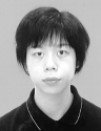「CBR-ACE: Counting Human Exercise using Wi-Fi Beamforming Reports」
CBR-ACE: Counting Human Exercise using Wi-Fi Beamforming Reports
[Journal of Information Processing Vol.30, pp.66-74]
[Abstract]
As people spend more time indoors owing to the COVID-19 global pandemic, the automatic detection of indoor human activity has increasingly become of interest to researchers and consumers. Conventional Wi-Fi Channel State Information (CSI)-based detection provides adequate accuracy; however, they have a deployment constraint owing to specific hardware and software for full CSI acquisition. This study exploits the Compressed Beamforming Report (CBR), which is a default form of CSI in IEEE 802.11ac and 11ax, to address the constraint in Wi-Fi CSI-based methods. The CBRs are shared among most IEEE 802.11ac compliant devices and are easily obtained with outer sniffers. Our CBR-based Activity Count Estimator (CBR-ACE) is a novel wireless sensing system using CBRs. The CBR-ACE provides a Raspberry Pi-based tool to easily deploy a new wireless sensing system into existing networks, and utilizes the CBR irregularity for automatic detection. From experiments in real-dwelling environments, the proposed CBR-ACE achieves average estimation errors of 0.97 in the best case.
[Reasons for the award]
This paper proposed a novel wireless sensing system, CBR-ACE, for human activity count estimation. The primary novelty is that it applied the CBR information to wireless sensing which is commonly available (can be reconstructed ) in IEEE 802.11ac and 11ax, while most existing studies rely on full CSI that are not available in these latest standard. Moreover, the authors developed open-source tools to reconstruct the CBR and conduct activity recognition using CBR. The paper's contribution must be enough for providing good knowledge and insights for our community.

Sorachi Kato
Sorachi Kato received his B.E. and M.E. degrees from Osaka University, Japan, in 2021, 2023, respectively. He is currently enrolled in the doctoral program at the Graduate School of Information Science and Technology, Osaka University. His research interests include wireless sensing and MIMO communication. He is a student member of IPSJ and IEEE.

Tomoki Murakami
Tomoki Murakami received his B.E., M.E., and Ph.D. degrees from Waseda
University. In 2008, he joined the NTT Network Innovation Laboratories,
Nippon Telegraph and Telephone Corporation(NTT), Yokosuka, Japan. He is
currently a distinguished researcher in the Wireless Access Systems
Project. His current research interests are high efficiency technologies
for future wireless systems. He is a member of IEEE and IEICE.

Takuya Fujihashi
Takuya Fujihashi received his B.E. and M.E. degrees from Shizuoka University, Japan. In 2016, he received his Ph.D. degree from the Graduate School of Information Science and Technology, Osaka University, Japan. He has been an assistant professor at the Graduate School of Information Science and Technology, Osaka University since April, 2019. His research interests are in the are of video compression and communications, with a focus on immersive video coding and streaming.

Takashi Watanabe
Takashi Watanabe is a Professor of the Graduate School of Information Science and Technology, Osaka University, Japan. He received his B.E., M.E., and Ph.D. degrees from Osaka University, Japan, in 1982, 1984, and 1987, respectively. He joined the Faculty of Engineering, Tokushima University as an assistant professor in 1987 and moved to the Faculty of Engineering, Shizuoka University in 1990. He was a visiting researcher at University of California, Irvine from 1995 through 1996. He has served on the many program committees for networking conferences: IEEE, ACM, IPSJ, IEICE.

Shunsuke Saruwatari
Shunsuke Saruwatari received his Ph.D. degree from University of Tokyo in 2007. From 2007 to 2008, he was a visiting researcher at the Illinois Genetic Algorithm Laboratory, University of Illinois at Urbana-Champaign. From 2008 to 2012, he was a research associate at the RCAST, University of Tokyo. From 2012 to 2016, he was an assistant professor at Shizuoka University. He has been an associate professor at Osaka University since 2016. His research interests are in the areas of wireless networks, sensor networks, and system software.





